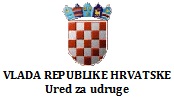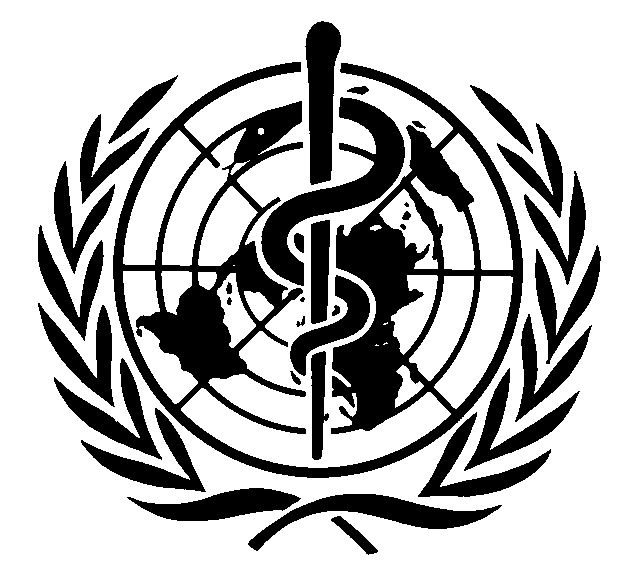FACULTY GRADUATE STUDIES DEPARTMENT NUTRITION AND FOOD TECHNOLOGY COURSE
2022 SCICU UNDERGRADUATE STUDENTFACULTY RESEARCH PROGRAMCHARLES UNIVERSITY OF PRAGUE FACULTY OF SCIENCE
CONTRACT TEACHING FACULTY SELF EVALUATION GUIDELINES 1 SUBJECT
FACULTY OF ENGINEERING AND PHYSICAL SCIENCES TAUGHT
FACULTY OF MEDICINE AND HEALTH SCHOOL OF MEDICINE
PHD STUDENTSHIP – ARCHITECTURAL HERITAGE FACULTY OF
Faculty: Faculty of Graduate Studies
Faculty: Graduate Studies
Department: Nutrition and Food Technology
|
Course Title |
Minerals and Vitamins in Nutrition |
Course code |
0643752 |
|||||||||||||||||||||||||||||||||||||||||||||||||||
|
Lecturer |
Prof. Hamed R. Takruri |
E. mail: [email protected] |
||||||||||||||||||||||||||||||||||||||||||||||||||||
|
Credits |
3 |
Pre-requisite (s) |
---- |
|||||||||||||||||||||||||||||||||||||||||||||||||||
|
Duration of Course |
16 weeks, 3 hours per week |
|||||||||||||||||||||||||||||||||||||||||||||||||||||
|
Course Description : An advanced level study of the physiological and biochemical aspects of vitamins and mineral elements, emphasizing their nutritional & pharmaceutical interactions and associated effects on their functions, requirements, deficiency signs and toxicity, as well as the study of their nutritional status assessment methodologies .
|
||||||||||||||||||||||||||||||||||||||||||||||||||||||
|
Objectives: Upon completion of this course, the student is expected to: Understand the definition of vitamins and minerals and the criteria of mineral "essentiality". Appreciate the functions of minerals and vitamins (the micronutrients) in the living body. Understand the consequencies of micronutrient deficiencies on health and correlate them with specific signs and symptoms of disease. Understand the interactions among micronutrients and between them and drugs. Know the toxic micronutrients and their impact on health. Know the claimed roles of micronutrient in the treatment and prevention of diseases.
|
||||||||||||||||||||||||||||||||||||||||||||||||||||||
|
Intended Learning Outcomes: Subject specific skills: At the end of the course students will be able to: Recognize the definition of vitamins and the criteria of essentiality of mineral elements. Know the mechanisms and mode of action of vitamins and minerals in the body and count the deficiency symptoms of vitamins and minerals. Count the deficiency symptoms of vitamins and minerals. Appreciate the role of micronutrient interactions on their body needs. Understand the interactions of drugs and micronutrients.
Core Academic Skills: At the end of the course, students are expected to: correlate micronutrient deficiencies with disease development in man gain knowledge and skills on assessment of nutritional status of vitamins and minerals. Gain knowledge about scientific research and data collection, and analysis related to micronutrients.
Personal and Key Skills: After finishing the course the student is expected to develop personal attitude in his daily life towards food practices and habits such as: Increase consumption of food sources of vitamins and minerals. Counsel people regarding facts and misinformation on the role of vitamins and minerals in health and the use of supplements. Avoid wrong practices, such as over-cooking and bad storage conditions, which contribute to vitamin losses and low bioavailability
|
||||||||||||||||||||||||||||||||||||||||||||||||||||||
|
Learning/ Teaching Methods: Lectures, group discussions and presentations by students for previously assigned topics. Seminars and term papers of assigned topics. Demonstration of vitamins and supplements commonly found in the market. |
||||||||||||||||||||||||||||||||||||||||||||||||||||||
|
Assignments: |
||||||||||||||||||||||||||||||||||||||||||||||||||||||
|
Assessment: 2 Hour Exams 40 %Course Project & Student Participation 20 % Final Exam 40 %Total 100 %
|
||||||||||||||||||||||||||||||||||||||||||||||||||||||
|
Syllabus Plan
References: 1. Basu, T.K.& Dickerson, J.W.(1996). Vitamins in Human Health and Disease CAB International, Guildford.
2. Brody. T (1999). Nutritional Biochemistry, 2nd ed. (Chaps. 9&10 The vitamins, inorganic nutrients pp 491-878) Academic Press, San Diego.
3. Augustin, J. et al. (1985). Methods of Vitamin Assay, 4th ed. J. Wiley and Sons, New York.
4. Shils,M.E Olson, J. A. & Shike, on (1999). Modern Nutrition in Health and Disease 9th edn. Lea & Febiger, Philadelphia .
5. World Health Organization (1996). Trace Elements in Human Nutrition and Health. WHO, Geneva.
7. حامد التكروري وخضر المصري (1997). تغذية الانسان (الفصل 9+10). دار حنين، عمان – الأردن. 8. خالد المدني وطه قمصاني (2000). الفيتامينات والمعادن بين الصحة والمرض، مطبعة المدني – القاهرة.
Related Websites: Food and Nutrition Information Center: www.nal.usda.gov/fnic. Centers for Disease Control (CDC): www.cdc.gov. USDA's Gateway to Nutrition Information: www.nutrition.gov. Food and Nutrition Service: www. fns.usda.gov/fns.
|
||||||||||||||||||||||||||||||||||||||||||||||||||||||
Faculty of Agriculture Dr. H.R. Takruri
Dept. Nutrition and Food Technology Fall 2005
Vitamin in Nutrition (653753
Course Projects in Vitamins
1. Vitamin fortification programs in Jordan
2. Carotenes as precursors of vitamin A.
3. Vitamin deficiencies in the Arab Middle East region.
4. Vitamin supplements for the school children.
5. Role of vitamins in hemoglobin formation.
6. Vitamin C requirements Determination in smokers and nonsmikers
7. Vitamin antagonists
8. Vitamin A and mineral interactions
9. Vitamin A consumption and the risk for osteoporatic fracture
10. Folic acid deficiency: relation with detect and cardiovaserlar disease
11. Vitamin mega doses: potentical hazards
12. Tocopherol content in vegetable oils forms, coverage of requirements
13. Folic acid-vitamin B12 interactions
PHILADELPHIA UNIVERSITY FACULTY OF ARTS DEPARTMENT OF
( 83 ) FACULTY OF MODERN MEDICNCE 01 ANAESTHESIOLOGY
(HRAUGUST 2014) TEMPORARY FACULTY APPOINTMENT FORM – REVISION PAGE
Tags: course title, (653753 course, course, department, nutrition, graduate, faculty, technology, studies
- 6 V OLUNTEER FACILITATOR APPLICATION THANKS FOR YOUR INTEREST
- RED DE CENTROS INTEGRADOS DE EMPLEO – CIE (20102011)
- NAVODILO ZA SPOROČANJE OPOZORILNIH NEVARNIH DOGODKOV IZ BOLNIŠNIC V
- MARKETING TIPS FOR YOUR YEAR AS PRESIDENT TABLE OF
- ADVERBIALES (TAMBIÉN HAY COORDINADAS SUSTANTIVAS Y ADJETIVAS) 1 CONSIGUIÓ
- NA OSNOVU ČLANA 56 ZAKONA O ORGANIZACIJI ORGANA UPRAVE
- 8ÈME SYMPOSIUM DE MORPHOMÉTRIE ET EVOLUTION DES FORMES 8TH
- SURAT PENDAFTARAN SEBAGAI CALON ANGGOTA BAWASLU PROVINSI KEPULAUAN BANGKA
- ACİL BATIN RADYOLOJİSİ YARD DOÇ BENGI GÜRSES YEDITEPE ÜNIV
- 7 PROTOKOLL FRA FORHANDLINGENE OM REVISJON AV HOVEDAVTALEN LO
- 2 STUDIA NIESTACJONARNE PRAWA WIECZOROWE STUDIA NIESTACJONARNE PRAWA
- C156 CONVENIO SOBRE LOS TRABAJADORES CON RESPONSABILIDADES FAMILIARES 1981
- THE SOUND PROFESSIONALS QUICK START GUIDE TO SONY
- SZANOWNI PAŃSTWO Z UWAGI NA WCIĄŻ POWRACAJĄCY PROBLEM UTYLIZACJI
- T EPISODE 28 13TH OCTOBER 2015 EACHER RESOURCE W
- TIPO EFECTO COMENTARIOS COMIENZO MÁXIMO DURACIÓN RÁPIDA INSULINA HUMANA
- 2 OBSERVASJONSSKJEMA BARN OG UNGE 0 – 18 ÅR
- SPN 215 GUÍA DE ESTUDIO PARA EL EXAMEN
- (PRIIMEK IN IME OZIROMA NAZIV VLAGATELJA) UPORABLJAJTE VELIKE
- ET 22 WORK PLAN ACTIONS TO BE CARRIED OUT
- 13122014 M E M O R Á N D
- [K8SPXC64] OPENSHIFT INSTRUCTIONS FOR PXC OPERATOR MISS INSTRUCTIONS FOR
- 附件、以色列會展中心2007年展覽期程表 THE ISRAEL TRADE FAIRS & CONVENTION CENTER
- ERNESTOCAPACITACIONPRO CELULAR 044 81 1316 1345 TEMARIO DEL CURSO
- BOLETIN INFORMATIVO NÚM P017 4 DE MARZO DE 2010
- О Б А В Е Ш Т Е Њ
- TALLER DE TALENTO MATEMÁTICO 110108 OLIMPIADA MATEMÁTICA PROBLEMAS FASE
- CURRICULUM VITAE NAME KAROL IZYDOR WYSOKIŃSKI AFFILIATION INSTITUTE OF
- KELLER INDEPENDENT SCHOOL DISTRICT EXPLANATION OF ELIGIBILITY DATES START
- WYNIKI OFICJALNE V BIEGU PRZEŁAJOWEGO – PIASTÓW 2009 PRZEDSZKOLAKI
 D TERMS OF REFERENCE CONSULTANCY ASSIGNMENT TO CONDUCT
D TERMS OF REFERENCE CONSULTANCY ASSIGNMENT TO CONDUCT PRIJAVNI OBRAZAC ZA EDUKACIJU O INTERNETSKOM MARKETINGU ZA NEPROFITNE
PRIJAVNI OBRAZAC ZA EDUKACIJU O INTERNETSKOM MARKETINGU ZA NEPROFITNEURZĄD M ST WARSZAWY – BIURO POLITYKI ZDROWOTNEJ NACZELNA
21 СВОДНАЯ ТАБЛИЦА ПО ОБРАЗОВАТЕЛЬНЫМ ПРОГРАММАМ КУРСОВ ПОВЫШЕНИЯ КВАЛИФИКАЦИИ
PROTOKÓŁ ZE SPOTKANIA KOMISJI DIALOGU OBYWATELSKIEGO PRZY WYDZIALE ZDROWIA
 PROGRAM KURSU „GUZ PŁUCA – AKTUALNE WYTYCZNE W DIAGNOSTYCE
PROGRAM KURSU „GUZ PŁUCA – AKTUALNE WYTYCZNE W DIAGNOSTYCE MINERALS IN AUSTRALIAN FRUITS AND VEGETABLES A COMPARISON
MINERALS IN AUSTRALIAN FRUITS AND VEGETABLES A COMPARISON 04022020 ÖDEYEN ÖDENEN ADI İŞLEM ADI EVRAK NO
04022020 ÖDEYEN ÖDENEN ADI İŞLEM ADI EVRAK NOÐïࡱáþÿ ¥áx80 Ø¿å)bjbj1²1² 6søsøå!ÿÿÿÿÿÿ·tt»»»»»ÿÿÿÿïïïïëïx8fd^eeee2444444ó¢uz4»4»»eeûif»e»e22eÿÿÿÿf¨dñïx86f0x8fïì^ïï»à44 x81 Concepto Aduanero 48351 de
PROGRAMACION DE FIESTAS DE PUEBLA DE ARENOSO SÁBADO 31
DEEL 3 “MAATSCHAPPELIJKE ORGANISATIE” DUIDT OP DE MANIER
ASSESSING VULNERABILITY AND ADAPTATION MECHANISMS TO CLIMATERELATED RISKS AN
 DEPARTMENT OF JUSTICE OFFICE OF CONSUMER PROTECTION P O
DEPARTMENT OF JUSTICE OFFICE OF CONSUMER PROTECTION P OAN EVENING WITH WILLIAM BLAKE PROGRAMME FOR THE EVENING
TÍTULO DE LA TESIS IMPLANTES EXPERIMENTALES DE ALOINJERTOS
„TABLICA 21 – VRIJEDNOST BODA ZA SPECIJALISTIČKOKONZILIJARNU ZDRAVSTVENU ZAŠTITU
 WORLD HEALTH ORGANIZATION REGIONAL OFFICE FOR SOUTHEAST ASIA NEW
WORLD HEALTH ORGANIZATION REGIONAL OFFICE FOR SOUTHEAST ASIA NEW LIMITED DISTRIBUTION – DRAFT MULTIYEAR TRAINING AND EXERCISE PLAN
LIMITED DISTRIBUTION – DRAFT MULTIYEAR TRAINING AND EXERCISE PLAN UNIVERSITY OF NORTH BENGAL ACCREDITED BY NAAC WITH GRADE
UNIVERSITY OF NORTH BENGAL ACCREDITED BY NAAC WITH GRADETO OBTAIN A VOUCHER FINANCIAL AID STUDENTS YOU